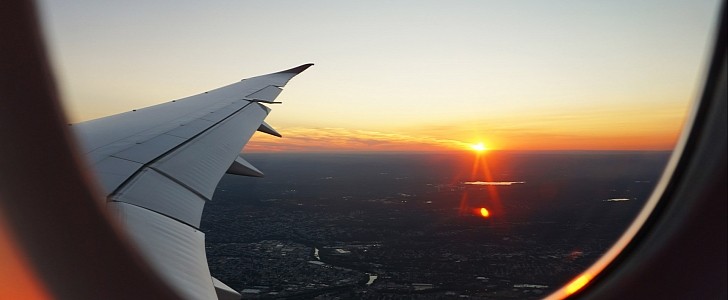Breakthrough Technology Converts Captured CO2 Into Sustainable Aviation Fuel
6 Jan 2022, ·
Until electric aircraft and hydrogen fuel cell systems can become the norm, aviation needs a quick, affordable solution that can lower as much as possible the negative environmental impact. The U.S. government is actively supporting initiatives for sustainable aviation fuel (SAF) development. One of the most innovative ones claims to turn CO2 and green hydrogen into SAF.
Johnson Matthey is not an aviation specialist, but a company that focuses on sustainable technology across multiple industry sectors. Its latest launch is a technology meant to capture carbon dioxide and convert into drop-in fuel for aircraft, with the help of green hydrogen. Under the simple name of Hycogen lies a complex process, based on “Reverse Water Gas Shift technology.”
Basically, green hydrogen and CO2 are converted it into carbon monoxide (CO), through a catalyzed process. The carbon monoxide is then mixed with more hydrogen, becoming synthesis gas (syngas), a basic component for fuel production. Together with an additional technology (developed in partnership with bp), Hycogen can transform up to 95% of CO2 into synthetic crude oil, which can then be further processed into SAF or other types of sustainable fuel.
By combining these two technologies, Johnson Matthey claims to have developed a scalable, cost-effective solution for SAF production. It can be deployed as a small-scale project, using hydrogen from a single electrolyser, or a large-scale version using multiple, bigger electrolysis modules.
In 2021, Hycogen’s developer was part of one of the pioneering projects, led by Boeing and United Airlines. Back in December, a commercial aircraft with more than 100 passengers onboard conducted a pioneering flight using SAF. The Boeing 737 MAX 8 flew from Chicago to Washington D.C., with 500 gallons (1,892 liters) of 100% SAF in one of its engines, and an equal quantity of conventional fuel in the other engine. That’s because current regulations only allow a maximum of 50% SAF for regular flights.
In fact, ramping up SAF production, and making it readily available, is one of the most important factors in achieving 100% SAF-powered flights in the near future. Hycogen promises to make that happen faster.
Basically, green hydrogen and CO2 are converted it into carbon monoxide (CO), through a catalyzed process. The carbon monoxide is then mixed with more hydrogen, becoming synthesis gas (syngas), a basic component for fuel production. Together with an additional technology (developed in partnership with bp), Hycogen can transform up to 95% of CO2 into synthetic crude oil, which can then be further processed into SAF or other types of sustainable fuel.
By combining these two technologies, Johnson Matthey claims to have developed a scalable, cost-effective solution for SAF production. It can be deployed as a small-scale project, using hydrogen from a single electrolyser, or a large-scale version using multiple, bigger electrolysis modules.
In 2021, Hycogen’s developer was part of one of the pioneering projects, led by Boeing and United Airlines. Back in December, a commercial aircraft with more than 100 passengers onboard conducted a pioneering flight using SAF. The Boeing 737 MAX 8 flew from Chicago to Washington D.C., with 500 gallons (1,892 liters) of 100% SAF in one of its engines, and an equal quantity of conventional fuel in the other engine. That’s because current regulations only allow a maximum of 50% SAF for regular flights.
In fact, ramping up SAF production, and making it readily available, is one of the most important factors in achieving 100% SAF-powered flights in the near future. Hycogen promises to make that happen faster.






No comments:
Post a Comment